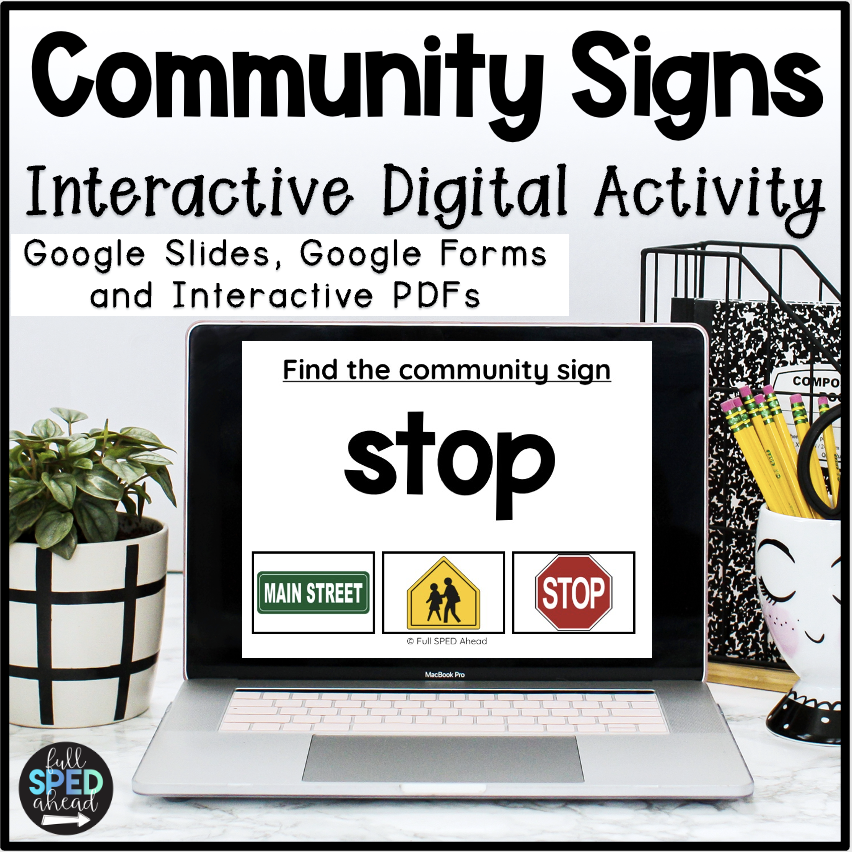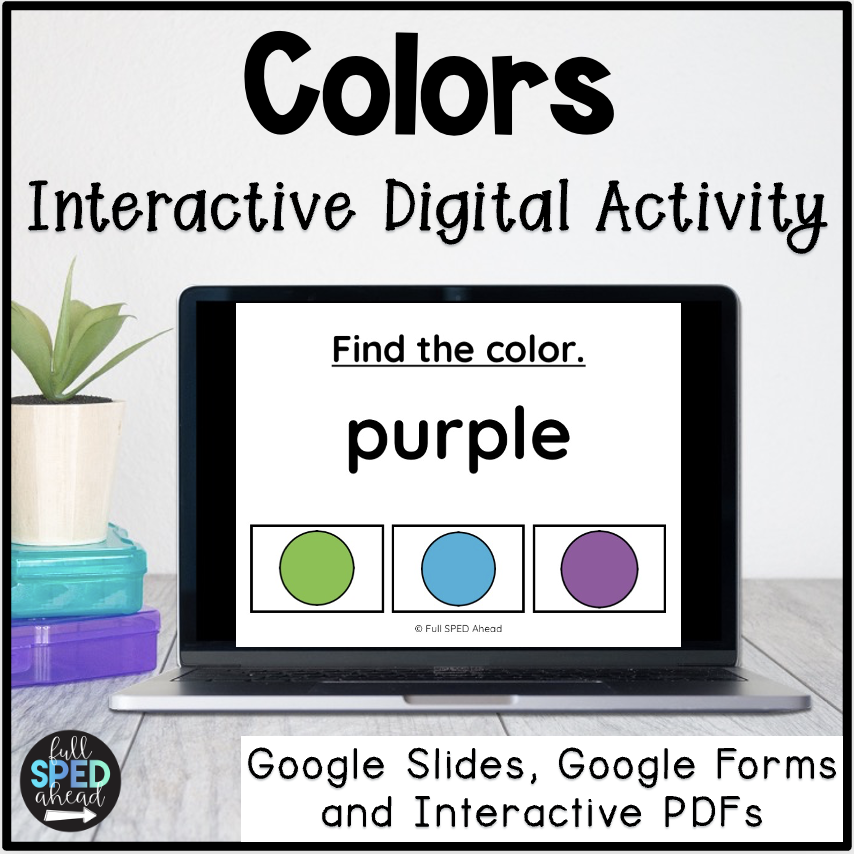In society, we have colors all around us. If a student is older than elementary school, we need to find better ways to teach color identification. As teachers, we need to help our students understand the meaning of colors and why they’re important. Take a look around you right now, the trees are green, the sky is blue. These things are important for our students to know too!
Color identification is a fundamental skill that lays the foundation for various learning areas in a special education classroom. By teaching students to identify colors, educators can enhance their cognitive, perceptual, and language development while promoting meaningful engagement with the surrounding environment. In this blog post, we will explore practical and engaging strategies for teaching color identification to special education students, ensuring an inclusive and enriching learning experience.
In special education, we spend some time talking about identifying colors in environmental signs. We start with the basics of green means go and red means stop. This is so important for our students to understand. Next, we also focus on how blue signs mean information. Yellow signs mean warning. Orange typically means construction. These are functional ways to teach colors in real world situations!

You can use this set of Community Signs Digital Activities. Use these to teach Community signs and color identification! Visual supports play a crucial role in facilitating color identification for special education students. Use visual aids such as color charts, color-coded visuals, and flashcards to reinforce learning and provide visual cues. Incorporate color identification tasks into daily routines, such as displaying a color of the day and encouraging students to find objects or items in that specific color.
What if your students aren’t ready for color identification and community signs? You can teach colors just from sight. Students should work towards identifying colors by sight without additional supports. As stated before, colors are all around us! Continue to work on your student independence!

Connect color identification skills to real-world applications to enhance their relevance and practicality for students. Take students on color-themed scavenger hunts around the classroom or school, encourage them to sort and categorize objects by color, and engage in discussions about the importance of colors in everyday life.
Engage students in hands-on art and craft activities that involve color exploration. Provide opportunities for students to mix primary colors to create secondary colors, engage in finger painting or coloring activities, and participate in collaborative art projects. These activities not only enhance color identification skills but also promote fine motor development and creativity.
Utilize multisensory activities to engage students with different learning styles. For example, encourage students to explore and manipulate objects of different colors, engage in sensory bins with colored materials, or participate in interactive games that involve color identification tasks. By incorporating sensory experiences, you can create meaningful connections between colors and students’ sensory perceptions.
Teaching color identification to special education students requires creativity, flexibility, and a range of instructional strategies. By incorporating multisensory activities, visual supports, hands-on experiences, interactive technology, and real-world applications, educators can create an engaging and inclusive learning environment that fosters color identification skills. Remember to tailor the strategies to the unique needs and abilities of each student, ensuring that they are actively involved and motivated to learn. With consistent practice, patience, and a positive approach, special education teachers can empower their students to confidently identify and appreciate the vibrant world of colors.
What are you looking for?
COPYRIGHT © 2025 Full SPED Ahead